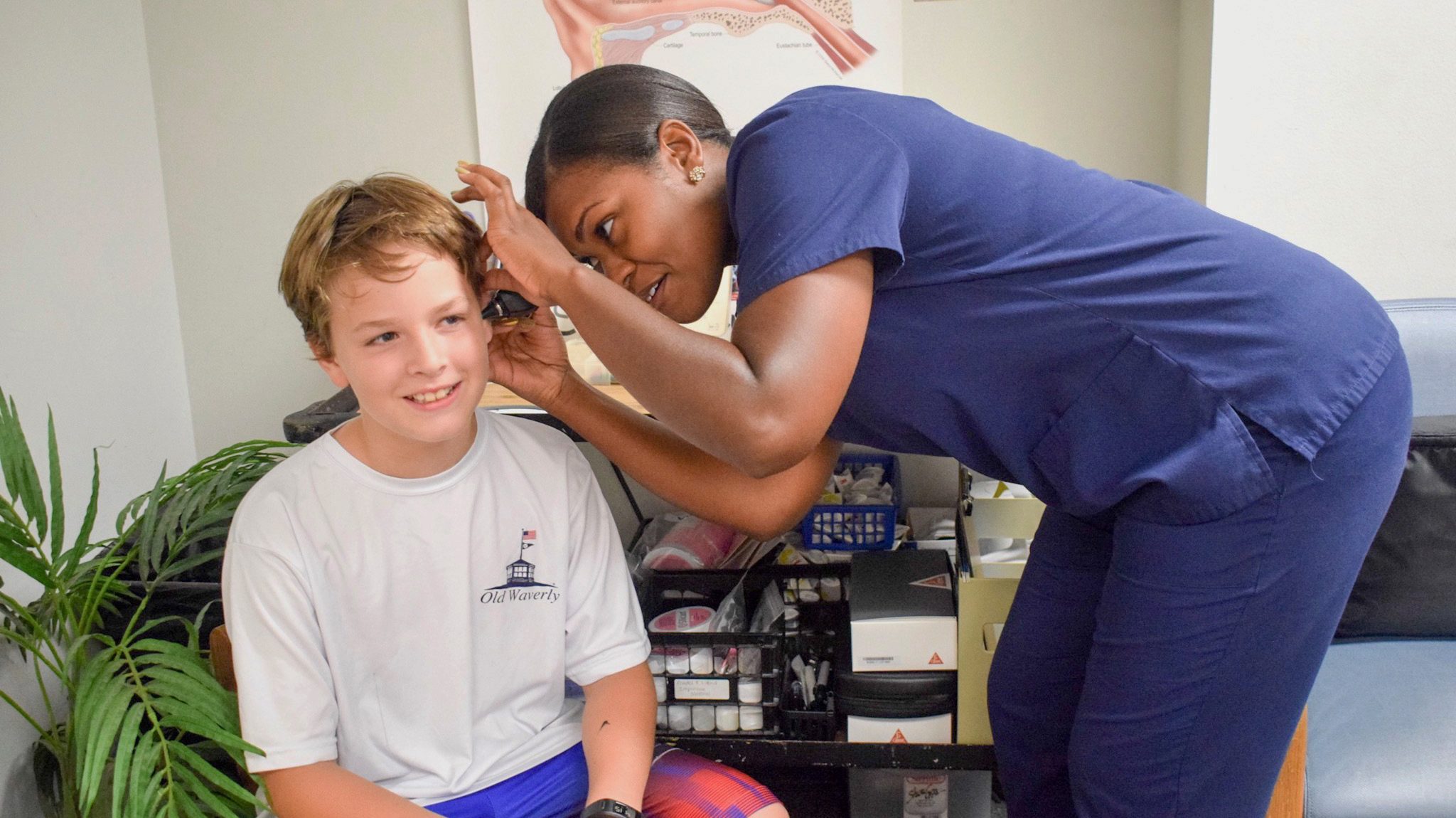
Ashley Pryor (right), who earned a master’s degree in communication sciences and disorders from UM, conducts a hearing test with a young client in the Speech and Hearing Center. Photo by Kendrick Pittman
OXFORD, Miss. – With close to 15 percent of American children ages 6-19 experiencing hearing loss, parents are urged to learn more about the sometimes-subtle signs of hearing loss, ways it can affect school-age children and where to find help during Better Hearing and Speech Month.
“Some children are born with hearing loss, but it can also be acquired afterwards – from ear infections, illnesses, certain medications, noise exposure and a variety of other causes,” said Anne Williams, an audiologist at the University of Mississippi Speech and Hearing Center.
“Those signs aren’t always immediately obvious to parents, but even mild hearing loss can have significant consequences for children in school. If parents have had concerns but haven’t sought a hearing evaluation yet, let Better Hearing and Speech Month – celebrated in May – be the time to take the next step.”
Hearing loss can affect a child’s success in school in various ways. These include problems with language arts, vocabulary, reading, math and problem solving, as well as lower scores on achievement and verbal IQ tests. It also can contribute to social and behavioral problems inside and outside the classroom.
“Hearing screenings are conducted periodically in schools, which is an important way that we identify children with hearing loss that may have gone unnoticed because it is less severe, late onset or misdiagnosed,” Williams said. “However, if a parent has any concern, they shouldn’t wait for periodic school screenings.
“Children with mild to moderate hearing loss can achieve one to four grade levels lower, on average, than their peers with normal hearing – unless appropriate management occurs – making timely intervention critical.”
To help a child with hearing loss reach his or her full academic potential, Williams advises parents to:
- Know Your Child’s Rights – All children in the United States are entitled to free appropriate public education under the Individuals with Disabilities Education Act. Education services designed to meet the individual educational needs of qualified students with disabilities, including hearing loss, are provided by school districts.
- Maximize Achievement – When it comes to managing hearing loss in schools, the use of an individualized education program, or IEP, maximizes a child’s success in the educational setting. The IEP may specify audiology services, speech-language pathology services and services of teachers of the deaf or hard-of-hearing. Parents have a right to participate in these meetings and are a vital part of the process.
- Champion Classroom Technology – Technology, such as an FM system, can make it easier for a child using a hearing aid or cochlear implant to hear and understand speech in a noisy classroom. Other technology solutions, such as a sound-field system, can benefit all kids in the classroom. Your IEP team should consider the specific and unique technology needs of your child.
- Encourage Effective Teaching Strategies – Talk to your child’s teacher about easy ways for them to help your child. Basic strategies – such as seating a child near the front, not turning one’s back while speaking, giving both verbal and written instructions on assignments, and using visual aids – can go a long way.
- Educate About Noisy Classrooms – Noise makes it more difficult for children with hearing loss to hear classroom instruction, and it is actually a distraction for many children. Inform school personnel about ways they can make classrooms quieter. Easy techniques include placing rugs or carpets over bare floors, turning off noisy classroom equipment when not in use and placing latex-free caps on chair legs.
If you would like a hearing evaluation for your child, contact Williams at 662-915-7271.
The Speech and Hearing Center is part of the Department of Communications Sciences and Disorders in the UM School of Applied Sciences.
The School of Applied Sciences offers professional preparation programs that integrate academic study, clinical training, creative research, service-learning and community outreach, leading to the development of leaders whose professional endeavors will improve health and well-being.